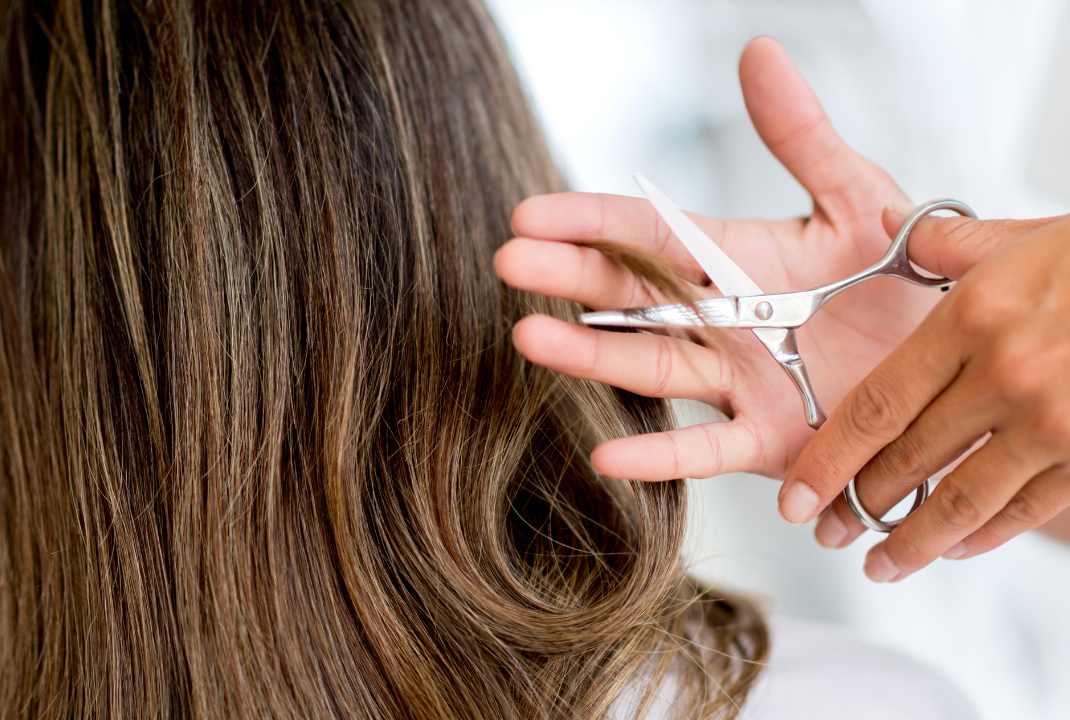To snip or not to snip? That is the question. Haircuts are the perfect way to switch up your style, but knowing how often you should get a haircut isn’t so straightforward.
At YA-MAN USA, we know that haircuts are important for maintaining healthy strands, along with cutting-edge styling tools and nourishing hair products. We also know that when it comes to how often you should get a haircut, there are a few factors at play, which we’ll explore in this article — so keep reading!
How Do Haircuts Support Strong, Healthy Strands?
A fresh cut can make you feel like a whole new person, but the perks go far beyond the surface.
Your hair grows in cycles, with each strand experiencing the anagen (growth), catagen (resting), and telogen (shedding) phases. While haircuts don't directly affect the speed of hair growth (a common myth), they do help maintain the health of your follicles, which is crucial for supporting healthy hair growth.
Whenever you trim your hair, you remove damaged ends and reduce breakage so that your hair can function properly and move through the hair growth cycle’s phases.
With this in mind, how often do you really need a haircut?

How Often Should You Get a Haircut Based on Your Hair Type?
On average, hair grows about half an inch per month, but this isn't a one-size-fits-all statistic. Genetics, age, health, and even the seasons can all play a part.
In other words, your locks are as unique as you are. Your hair type, go-to styles, and texture can all dictate how long between haircuts is right for you.
Let’s start with length…
When to Get a Haircut Depending on Length
- Short Hair
Short styles like bobs, lobs, and pixies are all about precision. To keep those lines sharp, plan for trims every 3-6 weeks. Pixies and short styles might need a refresh every other week or so.
- Medium Hair
Medium-length hair offers a nice balance of versatility and ease, but it’s not immune to split ends and misshaping. Trims every 6-8 weeks will help keep your style on point.
- Long Hair
Long, flowing strands can be more low-maintenance because they don’t show imperfections as conspicuously. A trim every 8-12 weeks will help keep split ends and uneven layers at bay.
When to Get a Haircut Depending on Texture

- Curly or Wavy Hair
Love your curls but hate the dreaded "triangle" shape as it grows out? A trim every 3-4 months helps maintain a flattering shape and defined tendrils.
- Fine or Thin Hair
Fine hair is more prone to split ends and breakage, making it look thinner and stringy. Trims every 6-8 weeks will combat damage and create the illusion of thicker, fuller locks.
- Damaged Hair
A cut every 4-6 weeks gives damaged strands a fresh start, helping them regain strength. For severe damage like excessive shedding or breakage, your stylist might suggest more frequent trims.
7 Signs It’s Time for a Cut
More often than not, your hair will tell you when it’s time to book your next trim. Here are some telltale signs to call your stylist:
1. Split ends
Split ends might seem insignificant, but they trigger a domino effect of damage. As the frayed ends split further up the hair shaft, they create more tangles and breakage. Timely trims stop this domino effect in its tracks and prevent further damage.
2. Excessive tangles
Constantly battling stubborn knots? Your hair could be crying out for a trim. Split ends and dryness create friction, which causes strands to catch and tangle, leading to frustration and potential breakage.
3. Limp, lifeless locks
As hair grows, the ends become heavier and pull down on the roots. This can make strands look flat and lifeless, even if they’re healthy. A trim removes this excess weight, revitalizing volume and bounce.
4. Difficulty styling
If your hair just doesn't cooperate, no matter how much effort you put into styling, it might be time for a salon visit. Overgrown ends create frizz and unruliness, which makes styling all the more frustrating.
5. Dry, frizzy strands
Dryness and frizz, especially at the ends, indicate damage and a need for a haircut. Snipping away those thirsty ends will help your hair retain moisture and lay smoother.
6. Hair doesn’t seem to grow
Trimming alone won’t stimulate hair growth. But if your hair has hit a plateau, it could be due to breakage from damaged ends. Since regular trims eliminate breakage, strands can flourish and reach their full-length potential.
7. More bad hair days than good
A haircut isn't just about healthy hair; it's about feeling good about yourself. A simple trim could be the difference between a bad hair day and one that leaves you ready to take on the world!
Alexa: Play “Roar” by Katy Perry.
9 Tips to Keep Hair Healthy and Happy Between Cuts
Wondering: “How can I keep my hair healthy between haircuts?” The real magic happens between salon visits:

- Apply a nourishing in-shower mask once a week: YA-MAN’s Deep Moist Repair Treatment nourishes damaged strands, adds softness and shine, and smells like paradise. Massage it into your hair post-shampoo, let it sit for a few while you jam to your self-care playlist, and rinse for hair that feels as good as it looks.
- Avoid over-washing, which strips natural oils, and under-washing, which triggers buildup. Take time to find the sweet spot for your hair type.
- Do a relaxing scalp massage a few times weekly to stimulate blood flow and promote hair health.
- Use a wide-tooth comb or a detangling brush to gently work through knots from the ends up.
- Incorporate hair oils to seal in moisture, smooth frizz, and add shine.
- Invest in quality tools trusted by trichologists, like YA-MAN’s Spa Styler® Blow Dry + Scalp Massage, to style hair while simultaneously preserving its integrity.
- Always use thermal protection when styling with heat.
- Choose quality products formulated for your specific hair needs. For example, if you struggle with limp locks, opt for volumizing products for more bounce.
- Use a silk pillowcase to minimize friction, reducing breakage and frizz while you sleep.
FAQs About Hair Cuts

What's the difference between a trim and a haircut?
A trim removes a small amount of hair to maintain your style and reduce split ends. A haircut, on the other hand, alters the length and shape, adding layers or completely restyling your hair for a new look.
Is it ok to get a haircut every 3 months?
For those with long or curly hair, probably. However, the optimal timing depends on your personal hair type, style, and concerns.
What happens if you never ever cut your hair?
If you never cut your hair, split ends will inevitably form and travel up the hair shaft, triggering breakage. This will make it look as if your hair isn’t growing. You’ll also encounter more tangles, dryness, and frizz.
Does trimming hair make it grow faster?
No, because hair grows from the hair follicles in the scalp and not at the ends. However, regular trims can make your hair look healthier, and contribute to your hair’s overall health and appearance.
Snip Away Bad Hair Days with YA-MAN USA!
How often you should get a haircut comes down to your personal texture, desired aesthetic, and individual goals.
Remember, haircuts are just one part of your overall hair care routine. A well-rounded blend of mindful habits and innovative solutions will support healthy, head-turning hair.



